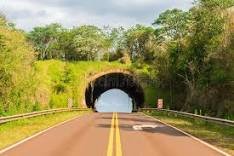Wildlife Crossings
Roads have few equals as a destroyer of animal life. Vehicles claim more wild terrestrial animals — perhaps more than a million per day in the US alone — than any other form of direct human-caused mortality, like hunting, oil spills, or wildfires. And it’s not just common critters like squirrels that get flattened (though we should worry about their welfare, too). At least 21 species are imperiled by cars in the US, and one recent study found that collisions may soon wipe out globally threatened creatures like maned wolves, brown hyenas, and leopards. We are, quite literally, driving some of the world’s rarest animals to extinction.
Wildlife crossings have now gone mainstream to stop the roadkill.
The most common forms of wildlife crossing are bridges and overpasses, tunnels, viaducts and culverts.
The concept was first developed in France in the 1950s. It took off in the Netherlands, where more than 600 crossings have been constructed to protect badgers, elk and other mammals. The Dutch built the world's longest animal crossing, the Natuurbrug Zanderij Crailoo, an overpass that spans more than 0.8 kilometers (0.5 miles). Wildlife crossings can also be found in Australia, Canada, Germany, the UK, and other parts of the world.
Banff National Park in Alberta, Canada: between 1996 and 2016, 44 structures — six bridges and 38 underpasses — were built for wildlife to traverse the Trans-Canada Highway, the nation's longest road, which bisects the park. During that time, park officials documented more than 150,000 crossings by mammals such as elk (Cervus canadensis), moose (Alces alces), black bears (Ursus americanus), cougar (Puma concolor), and grizzly bears (Ursus arctos).
In parts of Queensland, Australia, the koala (Phascolarctos cinereus) population has declined at an alarming speed over the past few decades. Auto accidents were among the leading causes of koala deaths in southeast Queensland between 1997 and 2011, according to a government report. Between 2010 and 2013, the Queensland state government introduced about a half dozen wildlife crossings. Several of these were modifications of existing drainage tunnels under roadways. Within these culverts were added ledges wide enough for small animals to scurry across without getting wet. One ecologist studying the sites expressed surprise at how quickly the koalas adapted and began using the tunnels.
The idea took a little longer to catch on in the United States, but wildlife bridges and tunnels began appearing there in the 21st century integrating conservation and highway construction.
Over time, collisions became impossible to ignore. As human populations grew, traffic spiked in rural areas. Meanwhile, elk, bear, moose, and especially deer were bouncing back after centuries of exploitation. When speeding cars struck these hefty mammals, the crashes could be catastrophic for both parties. In 1995, researchers estimated that deer collisions caused 29,000 injuries and around 200 human deaths every year in the US. Animal crashes had become a public safety crisis.
Let’s tally up the expenses of a crash — the hospital bills, the vehicle damage, the value of the animal itself, and so on — and found that the average deer strike dinged society more than $6,000. Moose and elk were even pricier. All told, animal crashes were estimated to cost America over $8 billion a year.
Against that backdrop, wildlife crossings were no longer viewed as frivolous expenditures, but vital public safety measures.
Since 2000, Arizona has constructed at least 20 corridors, including 17 underpasses, each augmented by funnel fencing. Their presence has brought about a 90 percent drop in wildlife-related highway accidents in one stretch of central Arizona known for migrating elk populations.
Wildlife crossings can protect migrating animals.
Around 1,000 wildlife crossings currently dot America's 4 million mile road network. (For comparison, the Netherlands’ road system is only 2 percent as large but boasts over 600 crossings.) The reason for their rarity? Money.
Fifty miles east of Seattle, a bridge crosses a steep stretch of Interstate 90 known as Snoqualmie Pass. Coyotes, elk, even toads cross it. Utah, Wyoming, Colorado, Florida, and New Jersey built their own crossings. Many showed promise: After a 100-foot passage was installed beneath I-70 in Colorado, for instance, hundreds of mule deer trotted through each summer.
That is progress.







